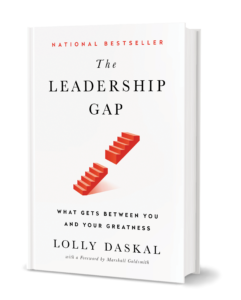
For anyone who works within an organization, meetings are a fact of life. And there are few things in corporate life worse than badly run meetings—the ones that don’t start on time and don’t stay on track but circle around and around in endless discussion with no direction, leaving everyone to wonder who’s in charge.
It doesn’t have to be that way. A meeting that’s structured and run well can be an effective and even productive use of everyone’s time. As a leadership and executive coach, I’ve helped hundreds of chief executives learn how to run effective meetings.
Based on that experience, here are the strategies that work best:
Provide an agenda in advance. An effective meeting needs prep work, and that means putting together an agenda. An agenda is a great tool for making sure your meetings stay on track and on time. It can help you set expectations up front, organize the subjects you want to cover into a workable structure, and avoid wasted time.
Send the agenda and any important background material 24 hours in advance. Once you’ve prepared your agenda, send it to participants for input. There may be something important that another participant wants to talk about, or something you’ve forgotten to add—or there may be some points you’ve listed that are already resolved. By sending the agenda and other meeting materials in advance, you give people a chance to prepare and make the most of their time.
Highlight important agenda items. Make a list of the highest-priority items, the ones that are the most important or urgent. Get through those before you tackle the lower-priority items so if something takes longer than planned you don’t have to let the meeting run late.
Determine whether each agenda item requires a decision or is open only for discussion. Then include both lists as part of the agenda. If possible, assign and enforce time limits for all speakers on each agenda item.
Prepare yourself. For every meeting on your calendar, schedule a 15-minute block of prep time. Use that time to think of ways you can add value to the meeting. Good preparation will allow you to lend your expertise to the meeting.
Start on time. If you don’t start your meetings on time, chances are you won’t end on time. Then the next meeting starts late. Before you know it, the entire day is off schedule. This strict time rule needs to happen at every level of the organization, starting from the very top.
Gather the right people. Give some thought to the list of people who should be there because of their expertise, their great ideas, or their need to know. At the same time, don’t waste the time of people who don’t have a reason to be there.
Stay away from rabbit holes. Every meeting has a tendency to stray off topic. If the subject begins to wander, quickly move back to the agenda. Don’t be afraid to intervene and bring the conversation back to the topic.
Have a parking lot. When a meeting goes off topic but the discussion is a good one to talk about, park the idea with a commitment to revisit it at a later meeting. Then make sure you really do revisit it.
End on time. If you’re good about setting an agenda with clear outcomes, you will know when a meeting needs to end. People have short attention spans. By keeping meetings short and timely, you have a better chance of holding their attention. Time is a precious resource, and no one wants their time wasted. Streamline meetings as much as possible.
Summarize each agenda item when you’ve finished discussing it. At the close of the meeting, summarize the next steps that the group has decided to take. This will ensure that everyone is clear on the tasks that have been assigned to them and the actions they need to take next.
Capture decisions and discuss next steps. You may have had a wildly productive meeting, but if the decisions weren’t captured, it could be as if it never happened. End every meeting with clear agreements and make notes on final decisions. Make sure you capture any immediate actions and assign them to the appropriate people. Send out your meeting notes promptly to everyone who attended to provide people with something to refer back to.
When you know how to lead great meetings, your team will have less wasted time, less frustration, and more time and energy for everyone to do the work that matters most.
Lead From Within: Meetings are good if they are productive, if they waste your time, get rid of them, because actions speak louder than words.
N A T I O N A L B E S T S E L L E R
The Leadership Gap: What Gets Between You and Your Greatness
After decades of coaching powerful executives around the world, Lolly Daskal has observed that leaders rise to their positions relying on a specific set of values and traits. But in time, every executive reaches a point when their performance suffers and failure persists. Very few understand why or how to prevent it.
Additional Reading you might enjoy:
- 12 Successful Leadership Principles That Never Grow Old
- A Leadership Manifesto: A Guide To Greatness
- How to Succeed as A New Leader
- 12 of The Most Common Lies Leaders Tell Themselves
- 4 Proven Reasons Why Intuitive Leaders Make Great Leaders
- The One Quality Every Leader Needs To Succeed
- The Deception Trap of Leadership
Photo Credit: Getty Images
Of Lolly’s many awards and accolades, Lolly was designated a Top-50 Leadership and Management Expert by Inc. magazine. Huffington Post honored Lolly with the title of The Most Inspiring Woman in the World. Her writing has appeared in HBR, Inc.com, Fast Company (Ask The Expert), Huffington Post, and Psychology Today, and others. Her newest book, The Leadership Gap: What Gets Between You and Your Greatness has become a national bestseller.